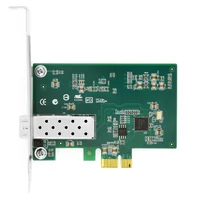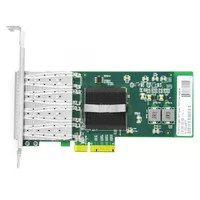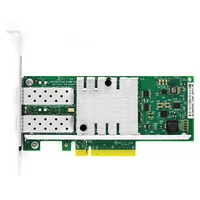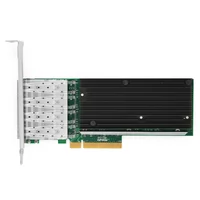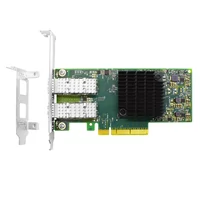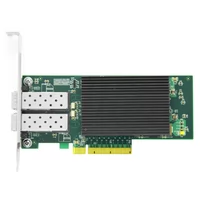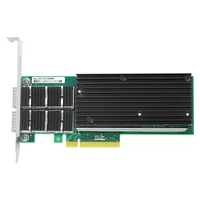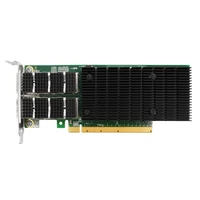According to different classification criteria, servers are classified into many kinds, mainly by network size, architecture (chip), usage, and appearance.
Table of Contents
Toggle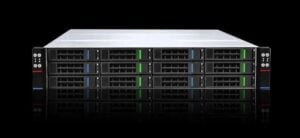 By Network Size
By Network Size
According to network size, servers are divided into Workgroup Servers, Department Servers, and Enterprise Servers.
Workgroup Server
It is used for small networks with a few dozen of computers or with low requirements for processing speed and system reliability, with relatively low hardware configuration.
Department Server
It is used for medium-sized networks with about a hundred computers and medium processing speed and system reliability, and its hardware configuration is relatively high.
Enterprise-class Server
It is used for large networks with more than hundreds of networked computers and the highest requirements for processing speed and data security, with the highest hardware configuration and the highest system reliability.
It should be noted that the boundaries between these three types of servers are not absolute, but rather blurred. For example, the difference between workgroup servers and department-level servers is not too obvious, and some are simply referred to as “workgroup/department” servers.
By Architecture (chip)
According to the structure of servers, they can be divided into CISC (Complex Instruction Set Computing) architecture servers and RISC (Reduced Instruction Set Computing) architecture servers.
IA architecture servers (Intel Architecture Server) – commonly referred to as PC servers, using x86 (CISC) chips and mainly using Windows NT/Windows2000, Linux, FreeBSD, and other operating systems servers, such as Intel PentiumIII (P4) and Intel (P4) Xeon, etc.
RISC architecture servers refer to servers with non-Intel architecture technology, using RISC chips and mainly UNIX operating systems, such as SUN’s SPARC, HP’s PA-RISC, DEC’s Alpha chip, SGI’s MIPS, etc.
Since the performance and price of RISC architecture servers are much higher than that of CISC architecture servers. In recent years, with the rapid development of PC technology, the technology gap between IA-architecture servers and RISC-architecture servers has narrowed considerably, and users basically tend to choose IA-architecture servers, but RISC-architecture servers still occupy a very important position in large, critical application areas.
By Usage
According to the usage, servers can be divided into General Purpose Servers and Special Purpose (or “Functional”) Servers.
General Purpose Servers are not designed for a particular service and can provide various service functions, and most servers are general-purpose servers.
Special Purpose (or “Functional”) Servers are specifically designed for one or more functions and differ from a General Purpose server in some respects. For example, a CD-ROM mirror server is used to store CD mirrors, so it needs to be equipped with a large-capacity, high-speed hard disk, and CD-ROM mirroring software.
By Appearance
According to the appearance of the server, it can be divided into Tower Servers Rack Servers, and Blade Servers.
Tower Servers are either chassis of roughly the same size as a vertical PC desktop, or large-capacity chassis, like a large cabinet, mainly divided into single-tower and dual-tower, as shown in the figure below.
Some tower servers use a chassis roughly the same size as a vertical PC desktop, and some use a large-capacity chassis, like a huge cabinet, mainly divided into single-tower and dual-tower, as shown in the figure below.
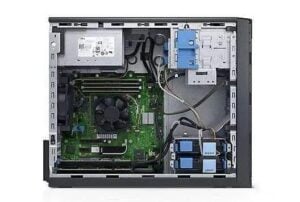
Single-tower
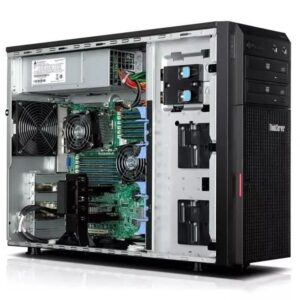
Dual-tower
Rack servers do not look like computers but like switches, and are available in 1U (1U=1.75 inches), 2U, 4U, and other specifications, as shown in the figure below.
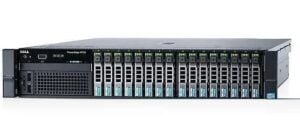
2U Rack Server
The rack server is formed with a 19-inch rack as the standard width because it meets the dense deployment of enterprises.
Placing servers in racks is not only good for daily maintenance and management but also may avoid unexpected faults. First, placing servers does not take up too much space. Rack servers are neatly disposed of in racks without wasting space. Secondly, cables and other connections can also be neatly put away in the rack. Power cables and LAN cables can all be laid out in the rack, so it can reduce the situation of connections piled up on the floor, thus preventing accidents such as kicking off wires. The specified dimensions are the width of the server (48.26 cm = 19 inches) and the height (a multiple of 4.445 cm). Since the width is 19 inches, so sometimes the rack that meets this requirement is also called “19-inch Rack”.
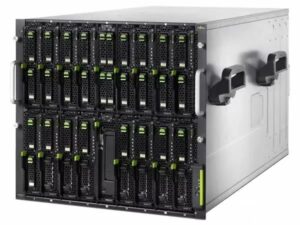
Blade Server
Blade servers are a low-cost server platform called HAHD (High Availability High Density), designed for specific applications and High-Density computing environments. Structurally, it is more compact than the rack server because it is very thin like a blade, and can be inserted into the entire server system cabinet as desired, hence the name “blade server”.
What is a network adapter? A network adapter is a device that interconnects a computer to a local area network. A computer mainly accesses the network through the network adapter. It is also called network card or network interface card (NIC), and is the most basic and important connection device in a computer network system.
. . …………………………………………………….. 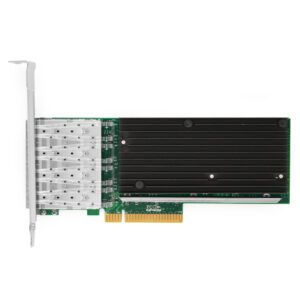

Network Adapter
Main functions of Network Adapter
The network adapter works at the physical layer and data link layer in the TCP/IP model for receiving and sending computer data.
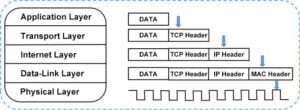
All computers in the network must have a unique MAC address, which is provided by the NIC, while the main functions of the NIC include:
Sending (encapsulation) and receiving (decapsulation) of data: when sending data, the first and last parts are added; when receiving data, the first and last parts are stripped.
Encoding and decoding of data: coding and decoding of physical layer data.
Data link management: mainly the implementation of CSMA/CD (carrier listening multiple access with conflict detection)
The Evolution of Network Adapter
Now let’s take a look at the evolution of NICs over the years.
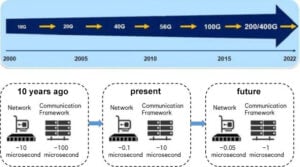
Classification of network Adapter
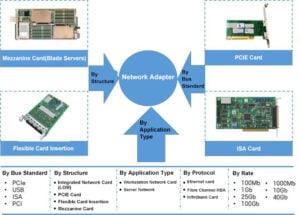
Server NICs vs regular NICs
Compared to server-specific NICs, ordinary NICs refer to NICs used in ordinary PCs, workstations, and consumer electronics that do not have high requirements for reliability and security, while servers differ from ordinary PC workstations in that servers are always in operation and require a long and stable operation, which requires server NICs to have the following characteristics:
Fast data transmission speed
The server is always in the process of data calculation and exchange, the data of 10Mbps and 100Mbps of the common network is no longer enough to meet the large data traffic network, the current server commonly used network card rates of 10Gbps, 25Gbps, etc.
Low CPU Utilization
The CPU of a server is constantly working and processing a large amount of data. If a server’s CPU spends most of its time providing data response for the NIC, it will inevitably affect the processing speed for other tasks. Server NICs have their control chips that can handle some CPU tasks, thus reducing the CPU’s computing overhead.
High-security performance
If the server’s NIC fails, the server will not be able to receive and send data, which is equivalent to downtime. Therefore, high reliability is a necessary feature for server NICs. Basically, server NICs have fault tolerance, such as Intel’s AFT(Adapter Fault Tolerance), ALB(Adaptive Load Balancing), and other technologies.
Some Network Adapters
The following is an introduction to some network adapters.
NIC: Network Interface Card
Specifically refers to the Ethernet card, which supports TCP/IP protocol, used in the Ethernet network.
CNA: Converged Network Adapter
Converged network card, essentially an Ethernet card, but supports FCoE function (FC over Ethernet).
HBA: Host Bus Adapter
Specifically refers to FC NICs, which support FC protocols and connect to storage or fiber switches.
HCA: Host Channel Adapter
Specially refers to Infiniband NICs, i.e. IB cards. Used in high-bandwidth, low-latency high-performance computers.
Network Card Interface
There are two main physical interfaces of network adapters: electrical and optical ports.
Electrical port: the ordinary RJ45 interface, used to connect the network cable.
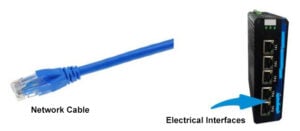
Optical port: used to connect transceiver module.
According to the interface package formwork, it can be divided into SFP+, SFP28, QSFP+, and QSFP28.
SFP+: support GE/10GE rate
SFP28: support GE/10GE/25GE rate
QSFP+: support 40GE/100GE rate
QSFP28: support 100GE rate
…………………………………………………………..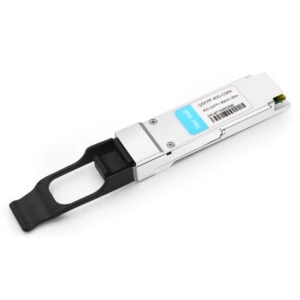
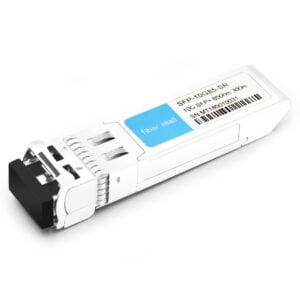
Transceiver Module
Network Chip Manufacturers
What are the manufacturers of Network Chip?
Intel: Important manufacturer in Ethernet card, building ecology based on KPDK, continuing to make efforts in NICs.
Broadcom: After the acquisition of Emulex and BRCM, Avago established a new parent company, named after Broadcom, with end-to-end integration of NIC, focusing on cloud scenario, SOC.
Cavium: Acquired BRCM CNA business to focus on FC HBAs, focus on storage HBA scenario, CAVIUM acquired to expand SOC field.
Mellanox: end-to-end Infiniband and Ethernet interconnect solution provider, acquired EZchip, gathering RDMA.

Related Products:
-
 Intel® I210 F1 Single Port Gigabit SFP PCI Express x1 Ethernet Network Interface Card PCIe v2.1
$60.00
Intel® I210 F1 Single Port Gigabit SFP PCI Express x1 Ethernet Network Interface Card PCIe v2.1
$60.00
-
 Intel® I350 F4 Quad Port Gigabit SFP PCI Express x4 Ethernet Network Interface Card PCIe v2.1
$180.00
Intel® I350 F4 Quad Port Gigabit SFP PCI Express x4 Ethernet Network Interface Card PCIe v2.1
$180.00
-
 Intel® 82599ES SR2 Dual Port 10 Gigabit SFP+ PCI Express x8 Ethernet Network Interface Card PCIe v2.0
$159.00
Intel® 82599ES SR2 Dual Port 10 Gigabit SFP+ PCI Express x8 Ethernet Network Interface Card PCIe v2.0
$159.00
-
 Intel® XL710-BM1 DA4 Quad Port 10 Gigabit SFP+ PCI Express x8 Ethernet Network Interface Card PCIe v3.0
$309.00
Intel® XL710-BM1 DA4 Quad Port 10 Gigabit SFP+ PCI Express x8 Ethernet Network Interface Card PCIe v3.0
$309.00
-
 NVIDIA NVIDIA(Mellanox) MCX4121A-ACAT Compatible ConnectX-4 Lx EN Network Adapter, 25GbE Dual-Port SFP28, PCIe3.0 x 8, Tall&Short Bracket
$249.00
NVIDIA NVIDIA(Mellanox) MCX4121A-ACAT Compatible ConnectX-4 Lx EN Network Adapter, 25GbE Dual-Port SFP28, PCIe3.0 x 8, Tall&Short Bracket
$249.00
-
 Intel® XXV710 DA2 Dual Port 25 Gigabit SFP28 PCI Express x8 Ethernet Network Interface Card PCIe v3.0
$269.00
Intel® XXV710 DA2 Dual Port 25 Gigabit SFP28 PCI Express x8 Ethernet Network Interface Card PCIe v3.0
$269.00
-
 Intel® XL710 QDA2 Dual Port 40 Gigabit QSFP+ PCI Express x8 Ethernet Network Interface Card PCIe v3.0
$359.00
Intel® XL710 QDA2 Dual Port 40 Gigabit QSFP+ PCI Express x8 Ethernet Network Interface Card PCIe v3.0
$359.00
-
 Intel®Ethernet Controller E810-CAM2 100G Dual-Port QSFP28, Ethernet Network Adapter PCIe 4.0 x16
$609.00
Intel®Ethernet Controller E810-CAM2 100G Dual-Port QSFP28, Ethernet Network Adapter PCIe 4.0 x16
$609.00

